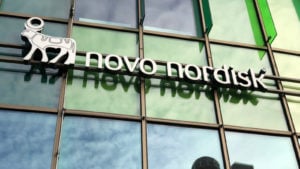The notion of a looming housing market crash appears to be picking up steam. There are multiple signs the ongoing correction could morph into something worse. For example, August marked the eighth straight month that homebuilder confidence levels have fallen.
National Association of Home Builders chief economist Robert Dietz has gone so far as to label the current situation a “housing recession.” Mortgage application levels have fallen to their lowest level in 22 years as of mid-August. The Federal Reserve’s actions have cooled the housing market, but much remains to be seen.
This all implies a housing crash remains a distinct possibility. Any crash would likely cause influential authorities to call a full-blown recession, which would trigger the markets to move in a somewhat predictable fashion. In other words, it’s a good time to assume a more defensive market posture.
| ACI | Albertsons | $27.85 |
| NVO | Novo Nordisk | $110.46 |
| DG | Dollar General | $240.14 |
Albertsons (ACI)

Albertsons (NYSE:ACI) stock represents the well-known grocery store chain based in Boise, Idaho. A potential housing market crash is just one of many reasons to believe the retail-defensive equity is a worthwhile pick at present.
Albertsons makes sense for the simple reason that it is already undervalued. Its price-to-earnings (P/E) ratio is better than that of roughly 79% of all other retail-defensive stocks. So, there’s a clear argument that it makes sense regardless of whether a housing crash materializes or not.
Investors should also understand that Albertsons’ EBITDA growth rate has eclipsed that of 84% of peers over the last 3 years. That’s part and parcel of the fact that Albertsons drives returns from its invested capital that have substantially outpaced average capital costs during a similar period.
Any housing crash will cause investors to rotate into a deeply defensive position, which Albertsons provides as a grocery retailer.
Novo Nordisk (NVO)

Healthcare stocks including Novo Nordisk (NYSE:NVO) tend to fare well during bear markets like the one investors are currently experiencing. Given its overweight rating and 12% upside based on the target price, now is a good time to buy NVO prior to any crash.
Novo Nordisk is interesting because its strong portfolio of diabetes and obesity drugs benefits from secular trends. In fact, U.S. obesity rates increased from 30.5% in 1999 and 2000 to 41.9% in March 2020. Rising obesity rates correlate to rising rates of diabetes. Thus, Novo Nordisk should continue to see rising demand for the products it sells.
Here’s the other interesting thing to note about Novo Nordisk: The company markets drugs that can safely help people lose more than 20% of their weight. The drugs, known as incretins, have the potential to become trillion-dollar sellers. Insurers can’t afford that, so prescriptions are highly restricted.
Investors should understand that Novo Nordisk is a steady defensive performer with tons of potential upside moving forward.
Dollar General (DG)

BMO Capital Markets analyst Kelly Bania believes Dollar General (NYSE:DG) stock is priced for perfection. As a result, her firm downgraded Dollar General to a neutral rating while affirming a $265 target price.
The notion is that DG, with its 26.24x P/E ratio in the bottom 30% of peers, can’t drive more investor capital through its doors. But here’s a counterargument to her assertions: A housing crash that triggers a full-blown recession will certainly lead to an uptick in Dollar General foot traffic.
That would raise revenues and likely earnings as well. And that would mean that DG stock’s P/E ratio could remain unchanged and the share price would rise anyway. So, yes, investors are already well-aware of Dollar General’s strong performance. And that is causing some hesitance. But there’s a reasonable argument that revenue could rise again in a housing crash, driving share prices higher in the process.
On the date of publication, Alex Sirois did not have (either directly or indirectly) any positions in the securities mentioned in this article. The opinions expressed in this article are those of the writer, subject to the InvestorPlace.com Publishing Guidelines.
